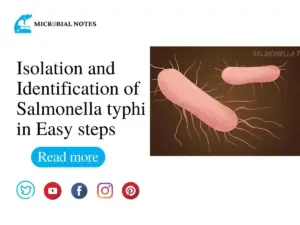What is Microbiology?
Microbiology is the study of all living organisms that are too small to be seen with the naked eye. This includes bacteria, archaea, viruses, fungi, prions, protozoa, and algae, collectively known as “microbes”. Microbes are present everywhere on earth. but can be seen only under a microscope. They are present in our body as normal flora, and every time our normal flora gets disturbed, microbes may become the source of different diseases. Microbes are involved in many biological and environmental processes such as biodegradation, nutrient cycle, food spoilage, climate change, biotechnology, and the cause of many diseases.
Branches of Microbiology :
Microorganisms are the dominant group of living organisms in the biosphere thus they are recognized as the basic research tools. They are actively involved in our everyday activities and help to understand the chemical and physical basis of life. To examine the biochemical and genetic foundation of living things, microbiology essentially provides the way. Microbiology is regarded as one of the crucial branches of science with the most promising prospects because bacteria are good models for understanding how cells function. They are important in the fields of health, agriculture, and industry that ensures human well-being. Microbiology is a broad field that needs to be studied.
There are two subfields of microbiology: pure and applied. The former is the branch that focuses on organisms in the most fundamental way. In applied microbiology, the organisms are used in a process rather than being studied in isolation. Additionally, taxonomy, which categorizes many bacteria, can be used to divide microbiology.
Branches based on taxonomy:
Bacteriology
Bacteriology is the area of microbiology that focuses on the study of bacteria. This field is further divided into a variety of specialties, some of which are systematic bacteriology, industrial bacteriology, agricultural bacteriology, and marine bacteriology. This area of microbiology focuses on a variety of topics, including diseases, applications, and the many varieties of bacteria and their features.
Mycology
It is the study of fungi, which are eukaryotic organisms as opposed to bacteriology, which is the study of bacteria, which are prokaryotic organisms. The many fungi such as mold and yeast can either be very helpful or very destructive. It is possible to employ these organisms in a variety of processes, ranging from breweries to food and medicine. Mycologists are those who specialize in mycology.
Protozoology
It is the branch of science that focuses on studying protozoa. These eukaryotic organisms, which include amoeboids, ciliates, sporozans, and flagellates, are like fungi. Protozoologists not only concentrate on these species’ taxonomy and morphology for classification purposes but also on their medical importance, given that a significant number of these organisms have been linked to both animal and human diseases. Malaria, sleeping sickness, and amoebic dysentery are some typical examples of protozoal diseases.
Phycology
One of the subfields of microbiology that focuses on the study of multicellular organisms is phycology. However, unlike mycology, phycology is concerned with the study of various species of algae that can be found in various environments. Some algae develop into giant seaweeds that are found in aquatic habitats, even though they may start off as tiny microbes that can be found floating in the water. Algae are significant in microbiology because they contribute to oxygen production in addition to be a component of the food chain. Phycologists are people who research phycology, such as Carl Adolph Agardh.
Parasitology
The study of parasites is known as parasitology. Protozoa, helminths (worms), and arthropods are three primary types of organisms that are primarily the focus of parasitology. Due to its focus on pathogens (as well as their vectors), parasitology has been impacted by a variety of different fields, including biochemistry and immunology. Parasitology includes the study of both single-celled and multicellular organisms, just like mycology and phycology. Parasitologists are people who research parasites
Nematology
The study of multicellular nematodes is the focus of the subdiscipline of nematology. Nematodes also referred to as roundworms, are a group of organisms (worms) that can be found on Earth in a range of habitats such as soil, mud, sands, mountains, etc. Nematodes are among the most prevalent organisms on our planet, according to studies. Nematology, a subfield of microbiology, has made it possible to categorize these worms according to their shape, habitats, ability to spread illness, etc. Nematologists are people who research nematodes.
Virology:
The area of microbiology known as “virology” is dedicated to the study of viruses. Viruses are acellular bacteria with simple structures that require host cells to multiply, in contrast to the majority of other organisms that are either categorized as being unicellular or multicellular. Viruses impact cells and subsequently cause disease because they require host cells to reproduce. Researchers in the field of virology also concentrate on topics like biochemistry, distribution, molecular biology, and the evolution of viruses, which makes. It is conceivable to comprehend them and create treatments for some of the most severe illnesses brought on by these parasites (AIDs etc).
Pure Microbiology:
It is the branch that focuses on organisms in the most fundamental way.
Immunology
The field of immunology focuses on the investigation of an organism’s immune system. To cure immune system illnesses such as autoimmune diseases, transplant rejection, and hypersensitivities, scientists study the immune system.
Microbial Genetics
The primary goal of microbial genetics is to understand the genetics of microorganisms, such as bacteria, viruses, and fungi. A microorganism’s evolution can be better understood by looking at its growth rates and generation cycles.
Microbiology cytology
The study of the structure and function of microorganisms is known as microbial cytology.
Microbial physiology:
The area of microbiology known as “microbial physiology” is concerned with the many components and typical operations of organisms (functioning of the different parts of the organism).
Microbial ecology
It is the branch that deals with the surroundings/habitat of the organism. This makes it possible to understand how the organism interacts and affects its surroundings.
Applied Microbiology:
Food Microbiology:
Numerous microorganisms that contaminate/damage food as well as those that can be employed for food processing/modification are the subject of research studies. As a result, with public health issues in mind, microbiology pays special attention to microorganisms like moulds, yeasts, and bacteria among others that either benefit or have bad effects on the quality of dietary material.
Medical microbiology:
Medical microbiologists diagnose, treat, and prevent infectious diseases with a focus on the practical application of medicine. These researchers also investigate bacteria to improve human health in general.
Biotechnology:
A biotechnologist’s area of expertise is researching ways to use live organisms to create new products or improve existing ones. Doctors can tailor therapy for their patients by utilizing genetic engineering, cell, and tissue technology.
Industrial microbiology:
The use of certain microbes for industrial production is a topic covered by this subfield of microbiology. Here, investigations are focused on using these organisms to boost and enhance yields in a variety of industries, including the chemical, pharmaceutical, and fuel industries. In this case, the introduction of microbes enables mass production for a sizable market.
Agriculture microbiology:
Microbes connected to illnesses and productivity in plants and animals are the focus of agricultural microbiology. As a result, it is concerned with both the economic value of these organisms for farmers and the industry as well as their medical significance. Agricultural microbiology seeks to address problems with agricultural operations while assisting farmers in increasing yields.
Soil microbiology:
The field of microbiology known as “soil microbiology” studies soil microorganisms and how they affect the characteristics of the soil.
Pharmaceutical microbiology:
It is concerned with both the creation of medications and the use of microbes to prevent contamination.





